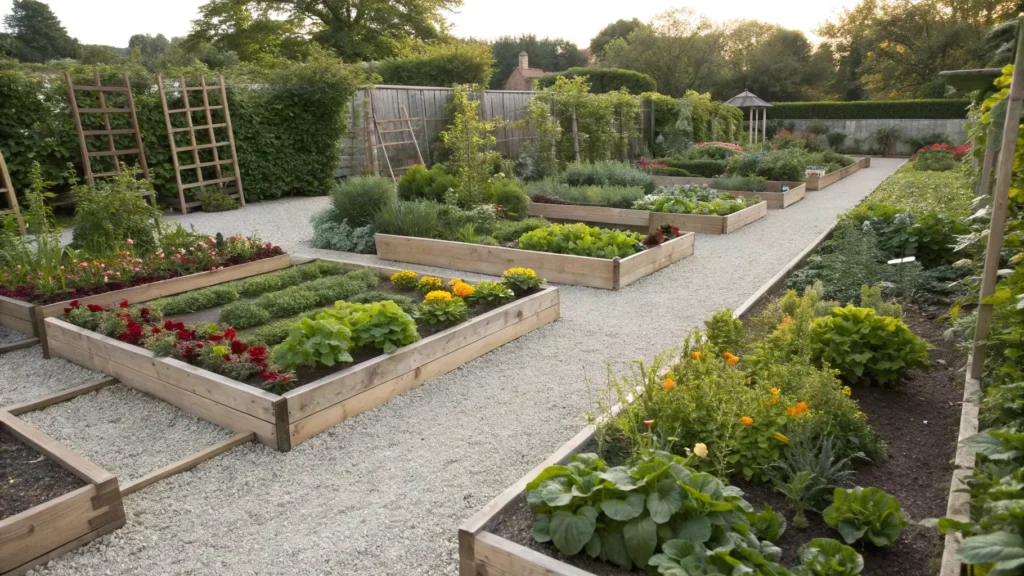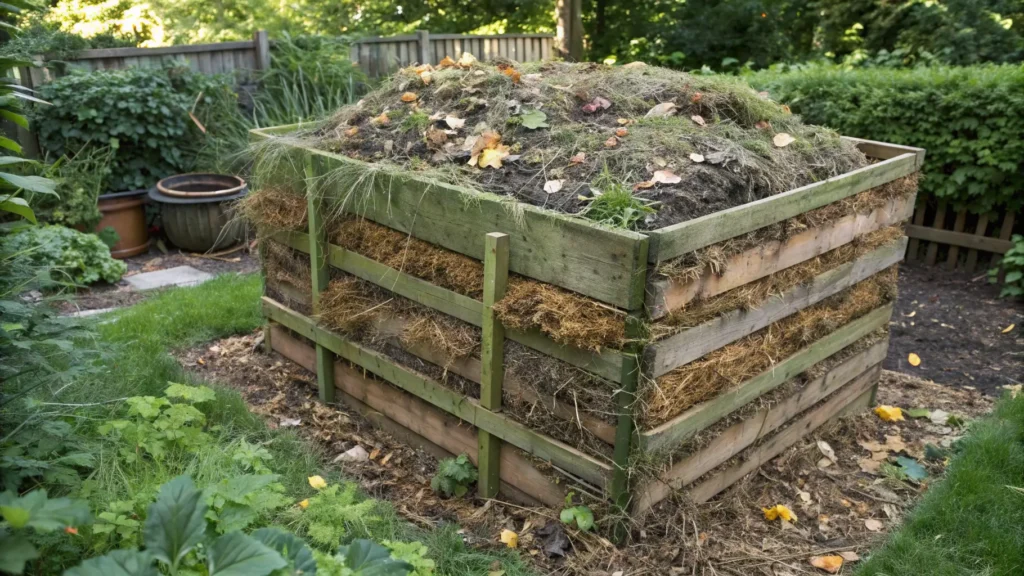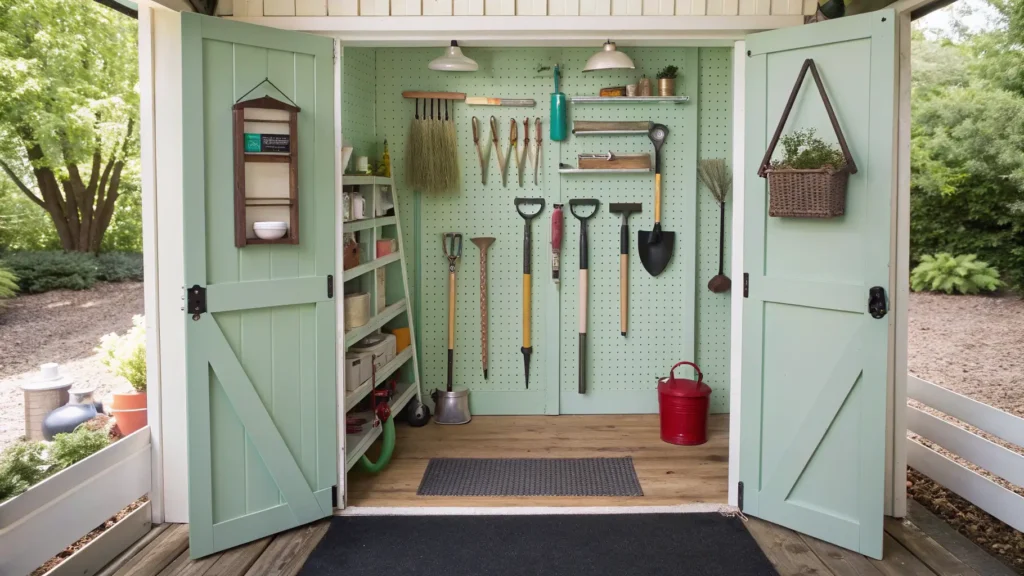The dream of a Martha Stewart vegetable garden isn’t just about growing food; it’s about cultivating beauty, order, and unparalleled productivity right in your own backyard. Imagine rows of vibrant, healthy produce, meticulously organized beds, and tools neatly stored – a testament to thoughtful design and diligent care. This isn’t just an aspiration for grand estates; it’s an achievable reality for any home gardener, no matter the size of your space or budget.
This comprehensive guide is your definitive resource, uniquely combining Martha Stewart’s aesthetic principles, organic practices, and detailed blueprints for every space and budget. We’ll provide a comparative analysis to ensure unparalleled beauty and productivity. Get ready to transform your gardening dreams into a stunning, bountiful reality, mastering the art of the Martha Stewart vegetable garden.
TABLE OF CONTENTS
The Philosophy Behind Martha Stewart’s Pristine Gardens
Martha Stewart’s approach to gardening is more than just a collection of tips; it’s a deeply ingrained philosophy that underpins every decision. Understanding this ethos is the first step to creating your own beautiful and productive Martha Stewart vegetable garden. Her gardens are a masterclass in organization, aesthetics, and practicality, where every element serves a purpose and contributes to the overall beauty.
Key principles include a strong emphasis on sustainability, prioritizing quality over mere quantity, and a deep respect for seasonality. This hands-on approach ensures attention to detail in every aspect, from soil health to pest management. As Martha herself often says, “Gardening is not a chore; it’s a creative outlet, a way to connect with nature, and a source of incredible satisfaction.” This sentiment drives her commitment to meticulous care and a holistic view of the garden as an integrated ecosystem.
Planning Your Martha Stewart-Inspired Garden Layout & Design
Creating a Martha Stewart-inspired vegetable garden begins with intelligent planning. This section merges practical garden planning with the strong aesthetic and design focus that defines her style, providing actionable principles for your vegetable garden layout Martha Stewart would approve of.
Choosing the Right Location & Orientation
The foundation of a successful garden is its location. Optimal growth hinges on factors like sunlight exposure, proximity to a water source, and protection from harsh winds. Aim for a spot that receives at least 6-8 hours of direct sunlight daily for most vegetables. Good soil drainage is also paramount to prevent waterlogging and root rot.
Designing for Beauty & Function: Beds, Paths & Focal Points
A Martha Stewart garden is as pleasing to the eye as it is productive. This means designing for both beauty and practical functionality. Consider raised beds for their clean lines, ergonomic benefits, and improved soil control. Materials like natural wood, stone, or durable metal can elevate the aesthetic. Straight pathways of gravel or pavers offer a sense of order, while incorporating edible flowers or herbs like nasturtiums and borage adds visual interest and attracts pollinators. Even a simple bench or garden sculpture can serve as an elegant focal point.

Cultivating the Perfect Foundation: Soil & Composting Secrets
The health of your soil is the cornerstone of any bountiful garden. For a Martha Stewart vegetable garden, this means going beyond basic fertilization to embrace rich, living soil nurtured through organic practices and expert composting.
Soil Preparation: The Unsung Hero
Before planting, understand your soil. A professional soil test can reveal its pH balance and nutrient deficiencies, guiding your amendments. Incorporating copious amounts of organic matter, such as compost and aged manure, is crucial for improving soil structure, water retention, and nutrient availability. Martha often advocates for enriching existing soil rather than relying solely on store-bought mixes. Good drainage is vital, which healthy soil naturally provides, preventing disease and encouraging strong root development.
Composting the Martha Stewart Way
Composting is central to Martha’s sustainable gardening practices. It’s about turning kitchen scraps and garden waste into “black gold” to nourish your plants. She favors hot composting, which efficiently breaks down organic matter. This involves proper layering of “greens” (nitrogen-rich items like food scraps, grass clippings) and “browns” (carbon-rich items like dry leaves, shredded cardboard). Regular aeration and maintaining moisture levels are key to a fast, efficient compost pile. The resulting rich compost is then used to amend beds, top-dress plants, and improve overall soil fertility, making your Martha Stewart composting efforts a cornerstone of success.

Selecting & Planting Your Produce: Martha’s Favorite Varieties
What makes a Martha Stewart vegetable garden truly unique? Often, it’s the careful selection of varieties that excel in both taste and visual appeal. This section guides you through her preferred choices and the techniques for planting them successfully.
Top Vegetable Varieties for a Martha Garden
Martha Stewart often gravitates towards heirloom varieties and gourmet selections known for their superior flavor, vibrant colors, and robust growth. Think ‘Brandywine’ tomatoes with their rich, complex taste, slender French filet beans, or diverse gourmet lettuce mixes that add texture and color to salads. She often includes specific herb varieties like Italian flat-leaf parsley, chives, and basil, valued for both their culinary versatility and their ornamental presence. Emphasizing variety ensures aesthetic appeal alongside incredible taste, making your garden a feast for both the eyes and the palate.
Planting Techniques for Success
Proper planting techniques are critical for optimal growth and yield in your Martha Stewart vegetable garden. When starting seeds indoors, ensure they are hardened off before transplanting. Pay close attention to seed depth and spacing, as overcrowding can lead to diminished returns. Succession planting – sowing small batches of seeds every few weeks – ensures a continuous harvest throughout the growing season. Companion planting, such as pairing basil with tomatoes or marigolds with most vegetables, can deter pests and enhance growth naturally.
Nurturing for Abundance: Watering, Feeding & Organic Care
Sustaining a productive and beautiful Martha Stewart vegetable garden requires diligent, ongoing care. This means adopting efficient watering strategies, providing natural nourishment, and employing organic pest and disease management – all central to Martha’s philosophy.
Smart Watering Systems & Strategies
Efficient watering is crucial for plant health and water conservation. Deep watering, rather than frequent shallow watering, encourages strong, deep root systems. Drip irrigation or soaker hoses are excellent choices for delivering water directly to the root zone, minimizing evaporation. Mulching around plants helps retain soil moisture, suppress weeds, and regulate soil temperature. Always assess individual plant needs; some require more water than others, especially during hot, dry periods.
Martha’s Organic Pest & Disease Management
For Martha, a healthy garden is a resilient garden, relying on natural and preventative measures rather than harsh chemicals. This organic pest control strategy begins with identifying common garden pests and diseases early. Introducing beneficial insects like ladybugs and lacewings can control aphid populations. DIY organic sprays, such as neem oil or insecticidal soap, offer effective solutions for localized infestations. Crop rotation is another powerful preventative measure, breaking disease cycles and depleting pest populations specific to certain plant families. She views the garden as a holistic ecosystem, where balance is key.
Maintaining the Elegance: Organization & Seasonal Chores
The enduring beauty and productivity of a Martha Stewart vegetable garden stem from consistent maintenance and impeccable organization. This section covers everything from keeping your tools pristine to managing the garden through the changing seasons.
Tool Organization: A Place for Everything
Martha Stewart is renowned for her dedication to neatness and efficiency, and this extends to her gardening tools. Investing in proper storage solutions, such as pegboards for hanging tools, sturdy shelving for pots and supplies, and dedicated caddies for smaller items, keeps everything accessible and in good condition. Regular cleaning and maintenance of tools – sharpening hoes, oiling wooden handles – not only prolongs their life but also ensures they are always ready for use. Proper seed storage and labeling are also vital for future seasons.

Seasonal Care for Year-Round Beauty
A Martha Stewart vegetable garden thrives through diligent seasonal care. Spring involves initial soil preparation, planting, and mulching. Summer demands regular weeding, pruning, and consistent watering, along with successional planting for continued harvests. Fall is for harvesting the last of the bounty, clearing spent plants, improving soil with compost, and planting cover crops or garlic. Winter protection, using cold frames or row covers, can extend the growing season, while this dormant period is also ideal for planning the next year’s layout and seed orders.
Harvesting & Enjoying Your Bounty: From Garden to Table
The ultimate reward of a Martha Stewart vegetable garden is the abundant, fresh produce you harvest and bring to your table. This final stage connects the hard work in the garden to the culinary and lifestyle aspects central to her brand.
Knowing the proper harvesting techniques and optimal timing is crucial for peak flavor and yield. Gently twisting or cutting vegetables from the plant prevents damage. For example, harvest leafy greens when young and tender, and pick beans regularly to encourage more production. Simple storage methods, like proper refrigeration for fresh produce or blanching and freezing for longer preservation, extend your enjoyment. Martha often finds inspiration in her garden for elegant recipes, transforming fresh ingredients into delectable meals.
Martha Stewart’s Garden for Every Space & Budget
While Martha Stewart’s gardens often appear grand, her principles can be adapted for any scale and budget. This section addresses how to achieve her signature style and productivity, whether you have a sprawling estate or a small balcony.
Small Space & Container Gardening Solutions
Even in compact yards, on balconies, or patios, you can create a productive Martha Stewart vegetable garden. Raised beds are excellent for small spaces, offering defined planting areas and good soil control. Vertical planters, window boxes, and hanging baskets maximize growing potential. Select dwarf varieties of vegetables or edibles with ornamental value, such as ‘Patio’ tomatoes, compact bush cucumbers, or colorful Swiss chard, to ensure both beauty and yield in limited areas.
Achieving the Look on a Budget
Creating an elegant garden doesn’t require an unlimited budget. You can source recycled materials for DIY raised bed construction, using reclaimed wood or repurposed containers. Seed saving from open-pollinated varieties offers a cost-effective way to expand your plantings each year. DIY plant supports from bamboo or branches can replace expensive trellises. Look for found objects or thrifted items that can be repurposed into charming garden decor or functional elements. The essence of Martha’s style lies in resourcefulness and thoughtful design, not just expensive materials.
Martha Stewart vs. Other Gardening Philosophies: A Quick Comparison
When considering a Martha Stewart vegetable garden, it’s helpful to understand how her approach compares to other popular gardening philosophies. Her style blends aesthetics, meticulous organization, and practical productivity, distinct from methods like permaculture or traditional row gardening.
| Feature | Martha Stewart’s Approach | Permaculture | Traditional Row Gardening |
|---|---|---|---|
| Aesthetics | High priority on beauty, order, and elegant design. | Focus on natural systems, often wilder appearance. | Emphasis on efficiency and yield, less on visual design. |
| Organization | Meticulous planning, neat rows, clear pathways, labeled. | Mimics natural ecosystems, integrated diverse plants. | Straight rows for easy cultivation and harvesting. |
| Biodiversity | Encourages variety, companion planting, beneficial insects. | Core principle, diverse polycultures, guilds. | Often monoculture within rows, less diverse planting. |
| Resource Use | Organic practices, composting, efficient watering. | Closed-loop systems, water harvesting, minimal inputs. | Can be resource-intensive (water, fertilizer). |
| Goal | Beautiful, productive, organized garden with quality yield. | Self-sustaining, resilient ecosystem, long-term yield. | Maximize yield, often for single-season production. |
Martha’s method appeals to those who value a refined, organized, and highly productive garden space that also serves as an aesthetic extension of the home.
Frequently Asked Questions About Martha Stewart’s Gardens
Here are answers to common questions about cultivating a Martha Stewart vegetable garden:
Q: What does Martha Stewart grow in her vegetable garden? A: Martha typically grows a wide variety of heirloom and gourmet vegetables, including ‘Brandywine’ tomatoes, French filet beans, diverse gourmet lettuces, and an array of culinary herbs. She emphasizes varieties known for their superior flavor and visual appeal.
Q: What kind of soil does Martha Stewart use? A: Martha is a strong advocate for rich, healthy, organic soil. She focuses on amending existing soil with significant amounts of homemade compost and aged manure, ensuring good drainage and optimal pH balance for plant growth.
Q: How does Martha Stewart organize her tools? A: Her tool organization is meticulous. She uses pegboards, shelves, and dedicated storage solutions to keep tools clean, sharp, and easily accessible. “A place for everything, and everything in its place” is a guiding principle.
Q: Can I have a Martha Stewart garden in a small space? A: Absolutely. Martha’s principles of design, organization, and efficient cultivation are perfectly adaptable to small spaces. Raised beds, container gardening, vertical planters, and careful plant selection are key.
Q: Does Martha Stewart garden organically? A: Yes, Martha Stewart is a staunch proponent of organic gardening. She relies on natural fertilizers, beneficial insects, companion planting, and homemade solutions for pest and disease management, avoiding synthetic chemicals.
Conclusion: Your Journey to a Beautiful, Productive Garden
Embarking on the creation of a Martha Stewart vegetable garden is a journey that promises not only abundant harvests but also immense satisfaction. By adopting her philosophy of meticulous planning, organic care, and an unwavering eye for beauty, you can transform any space into a stunning and productive oasis. From designing elegant layouts to cultivating healthy soil and nurturing bountiful plants, every step contributes to a garden that truly reflects her iconic style.
We hope this guide empowers you to begin or enhance your own gardening adventure. Remember, as Martha Stewart herself inspires us, “Gardening is about getting your hands dirty and connecting with nature in a beautiful way.” Share your own Martha-inspired garden success stories and photos on social media – we’d love to see your progress!
